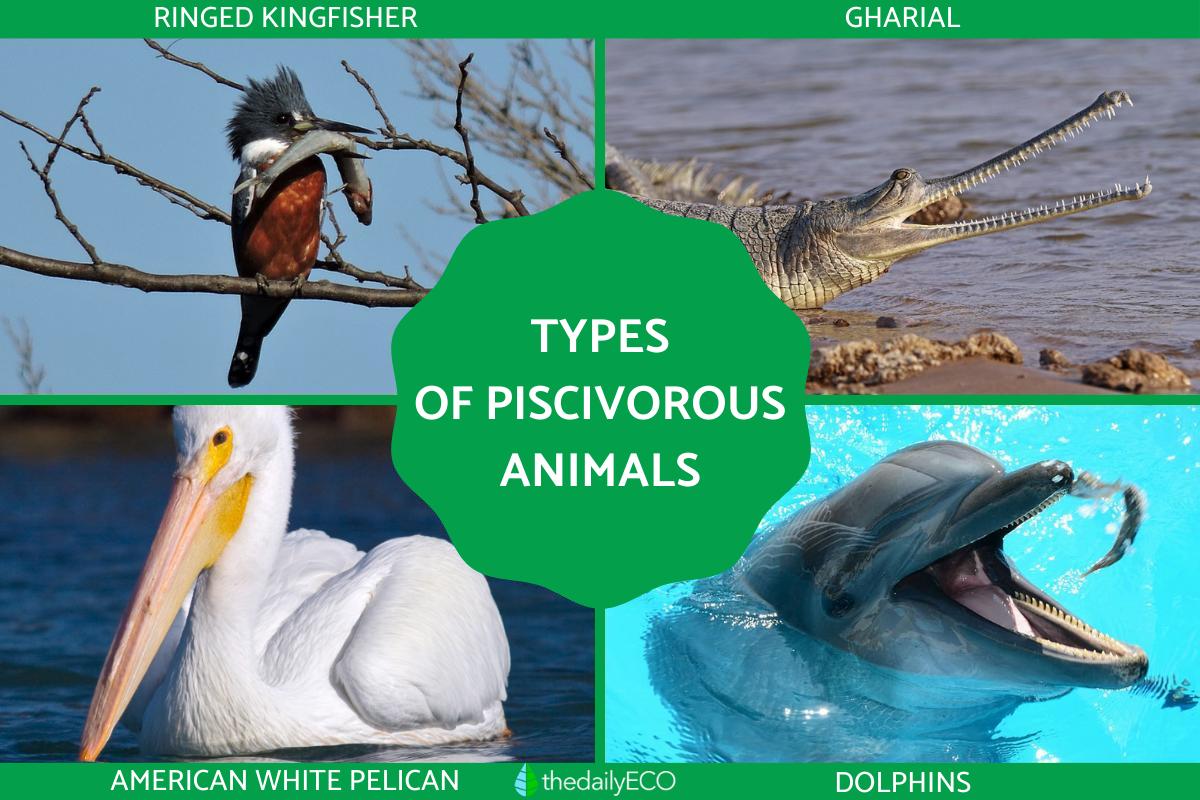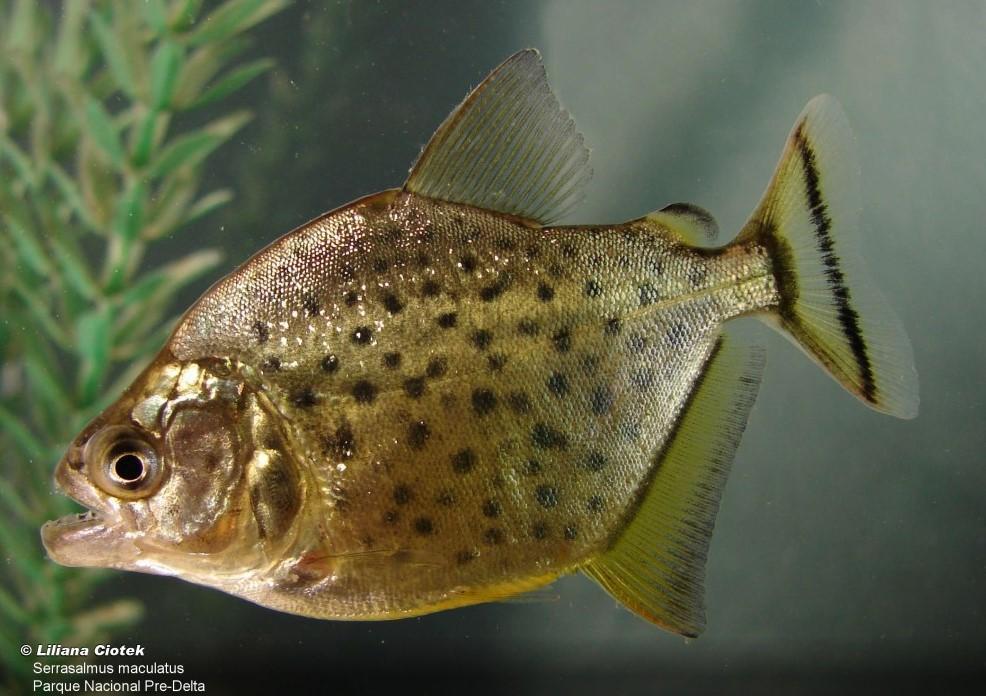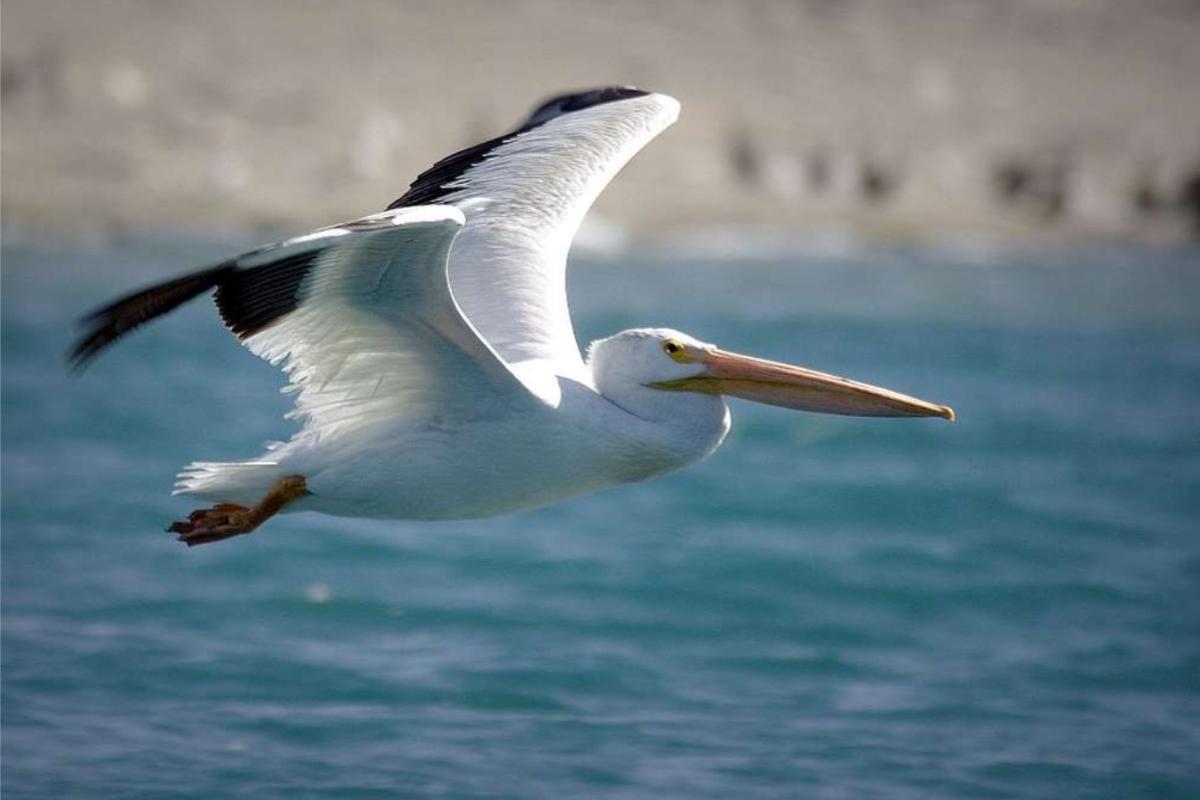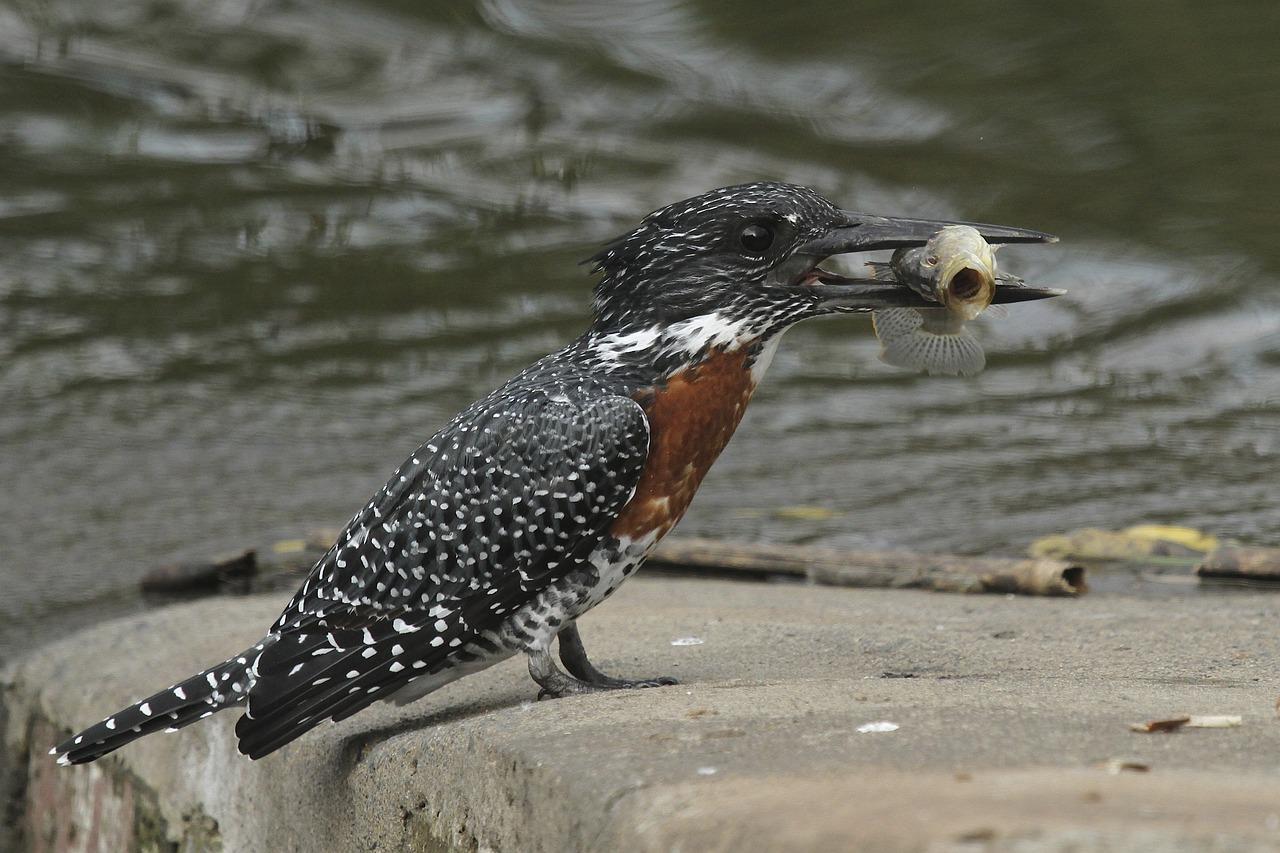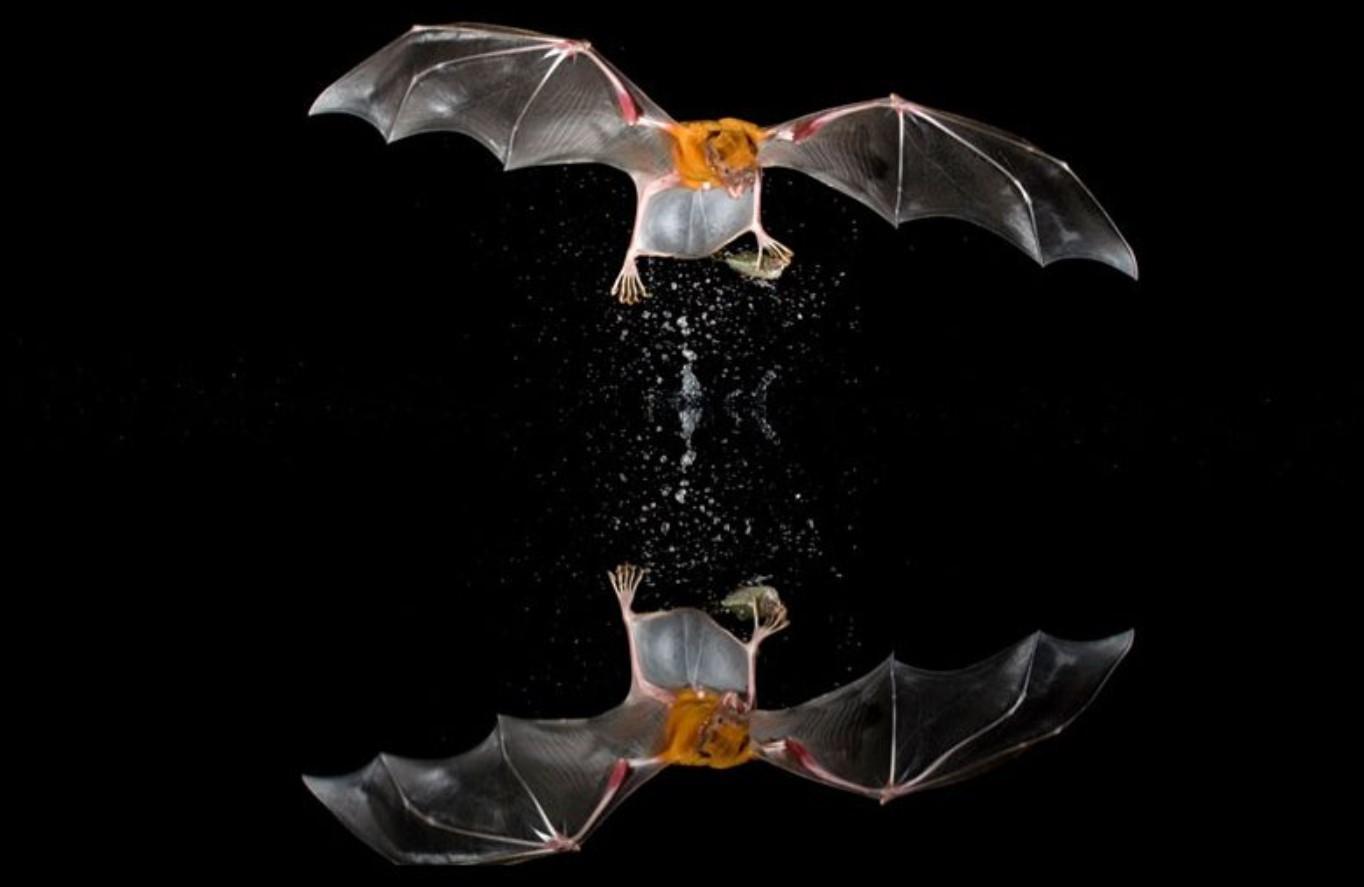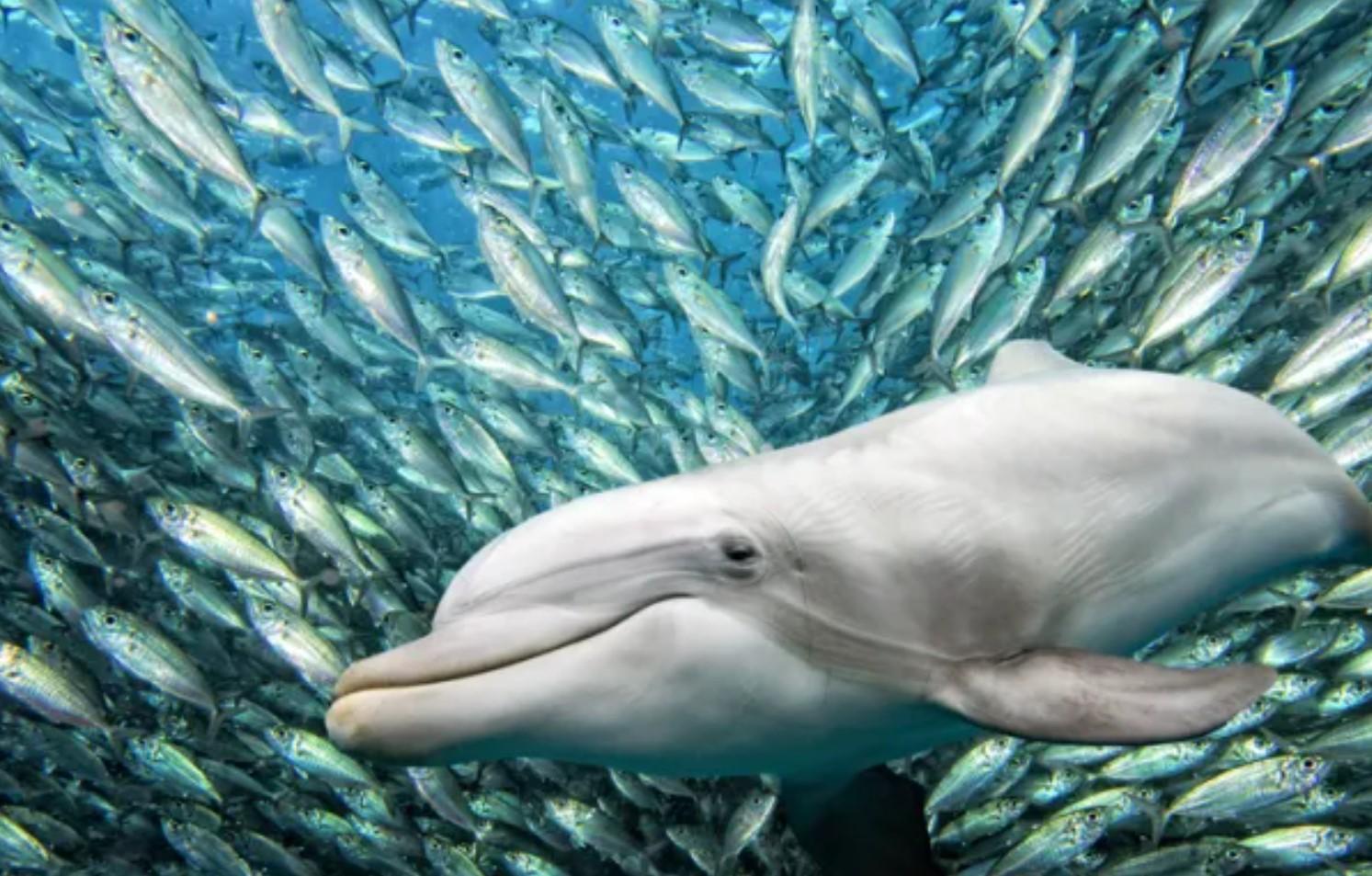Types of Piscivorous Animals With Examples


Animals are classified by many different criteria, but the type of food they eat is one of the most significant. Piscivores are animals which feed primarily on fish, deriving their necessary nutrients mainly from this source. While being piscivorous is a commonality in these animals, they are an incredibly diverse group which includes mammals, birds, reptiles and even other fish. What they do have in common is living in a habitat with access to water, whether they are aquatic animals or live on land near bodies of water. While piscivores feed mainly on fish, this does not mean they will not supplement their diet with other types of food.
At thedailyECO, we look more closely at the different types of piscivorous animals. We provide examples of piscivores, as well as photos and information on their specific fish diets.
What are piscivorous animals?
The term piscivore comes from the Latin pisces meaning ‘fish’ and vorare meaning ‘to devour’. It refers to animals whose main source of food is fish. Piscivorous animals have evolved by taking advantage of the abundant resources and diversity of fish populations present in rivers, lakes, streams, oceans and other bodies of water.
Being piscivorous is a classification based on diet, so it is a very large and diverse group. Find out which animals eat fish and their characteristics below. Doing so will help you to learn more about this fascinating group adapted to the aquatic and semi-aquatic environment.
Characteristics of piscivorous animals
Now that we have a basic definition of piscivorous animals, we can look more closely at their shared characteristics:
- They make up a subgroup within carnivorous animals since they obtain the necessary energy and nutrients from the meat of other animals, but specifically fish.
- Some species feed exclusively on fish, while others also include other types of food in their diet.
- They are found in different taxonomic groups such as birds, mammals, reptiles and fish.
- They have morphological and physiological adaptations that allow them to capture and consume fish. These include long legs, sharp claws, curved teeth, elongated snouts, flat head, large eyes, large beak or a subjugular pouch.
- They use different hunting strategies to obtain their food, such as flying above the water, waiting near the surface of the water while observing carefully, submerging or diving into the water, or chasing their prey quickly.
- They play a fundamental role in aquatic ecosystems as they regulate fish populations and maintain ecological stability. Learn more about the different types of aquatic ecosystems.
- Some piscivorous animals are threatened by habitat loss, water pollution, overfishing, dam creation and poaching.
Below we look at some of the different types of piscivores with photos:
Spotted piranha
The spotted piranha (Serrasalmus maculatus) is a freshwater fish with a compressed body. Their scales are of an iridescent gray color with a yellow belly. They are distributed in the basins of the Amazon and Paraná rivers, as well as parts of Paraguay, Uruguay and the Río de la Plata.
The powerful jaws of this fish-eating fish have triangular, razor-sharp teeth that allow it to tear the flesh from other aquatic animals. They can consume almost any part of the fish, but they are particularly known for eating fins. They will often supplement their diet with crustaceans and insect larvae, especially during times of fish scarcity.

Gharial
The gharial (Gavialis gangeticus) is a reptile belonging to the order of Crocodilia. It lives in freshwater systems in India. The largest population is found in the National Chambal Sanctuary, a protected area in northern India.
The gharial is characterized by its narrow and long snout with a greater number of teeth than other crocodile species. They are more or less the same size in the upper and lower jaws. This type of snout arose as an adaptation to its piscivorous diet.
According to the IUCN, this species is in critical danger of extinction. This is due to various factors including the construction of dams that modify water flows, illegal hunting and overfishing of fish that are its main food, among other threats.
Learn more about other types of crocodilians with our article on the difference between crocodiles and alligators.

American white pelican
The American white pelican (Pelecanus erythrorhynchos) is a species of large waterfowl that inhabits bodies of both fresh and salt water in North America, migrating south in winter. Unlike other pelicans, it does not dive into the water to get its food, but rather fishes cooperatively with other individuals. They do so by surrounding the fish and pushing them to the surface. To capture them, they dip their beaks into the water and removes them by placing them inside its gular sac, a flexible skin bag that expands. Doing so allows a pelican to eat between 1.5 to 2 kg of fish per day.
Learn more about another other wading birds which also eat fish with our article on the different types of flamingoes.

Ringed kingfisher
The ringed kingfisher (Megaceryle torquata) is another American bird that is distributed from southern Texas all the way to Tierra del Fuego at the bottom of South America. It is usually observed near rivers, streams, lakes, lagoons and other bodies of water with coastal vegetation in urban or suburban areas.
The ringed kingfisher has a thick, long and pointed beak with which it feeds mainly on fish. To hunt, it dives into the water from the branches of nearby vegetation. When the water is cloudy, it must opt for other prey, since the fish would be less detectable and/or would have greater opportunities to escape.

Greater bulldog bat
We should know this is a type of piscivorous animal because the greater bulldog bat (Noctilio leporinus) is also known as the fisherman bat. It is an inhabitant of humid forests ranging from Mexico to northern Argentina that feeds mainly on freshwater or brackish water fish, although it can sometimes consume other vertebrates or insects.
These bats have notable anatomical adaptations to feeding on fish. These include their elongated legs, long, sharp, curved claws, and specialized pouches used to store food. During the evening they come out of their caves in search of food and hunt near the water, capturing prey with their sharp claws (depicted in the photo below) or even with their interfemoral membranes.
Learn more about animals that live in temperate forests with our related article.

Dolphins
Dolphins (various orders in Cetacea) are marine mammals that feed mainly on fish. Their echolocation ability allows them to orient themselves and locate their prey in the water, using their fusiform bodies to swim quickly after fast fish prey. Learn more about types of animals that use echolocation in our related article.
Dolphins have various techniques for hunting fish. When they hunt in groups they surround the fish and begin to swim in circles, maintaining amazing coordination until they close the group around their prey. They establish turns for feeding opportunities. Some dolphins corner their prey on the shores and take advantage of the waves to capture them. Other species create clouds of sediment with their tails and corral the fish into a narrowing circle. The frightened fish try to escape and end up falling into the jaws of the dolphins.
Learn more about the feeding habits of one of the most famous types of dolphin with our article on the differences between orcas and false killer whales.

If you want to read similar articles to Types of Piscivorous Animals With Examples, we recommend you visit our Biology category.
- Elizalde-Arellano, C., Uría-Galicia, E., & López-Vidal, J. C. (2004). Lingual morphology of the piscivorous bat Noctilio leporinus (Chiroptera: Noctilionidae).
- Red Lists of the International Union for Conservation of Nature. Retrieved from: https://www.iucnredlist.org/
- Biodiversity Information System of the National Parks Administration, Argentina. Retrieved from: https://sib.gob.ar/portada





